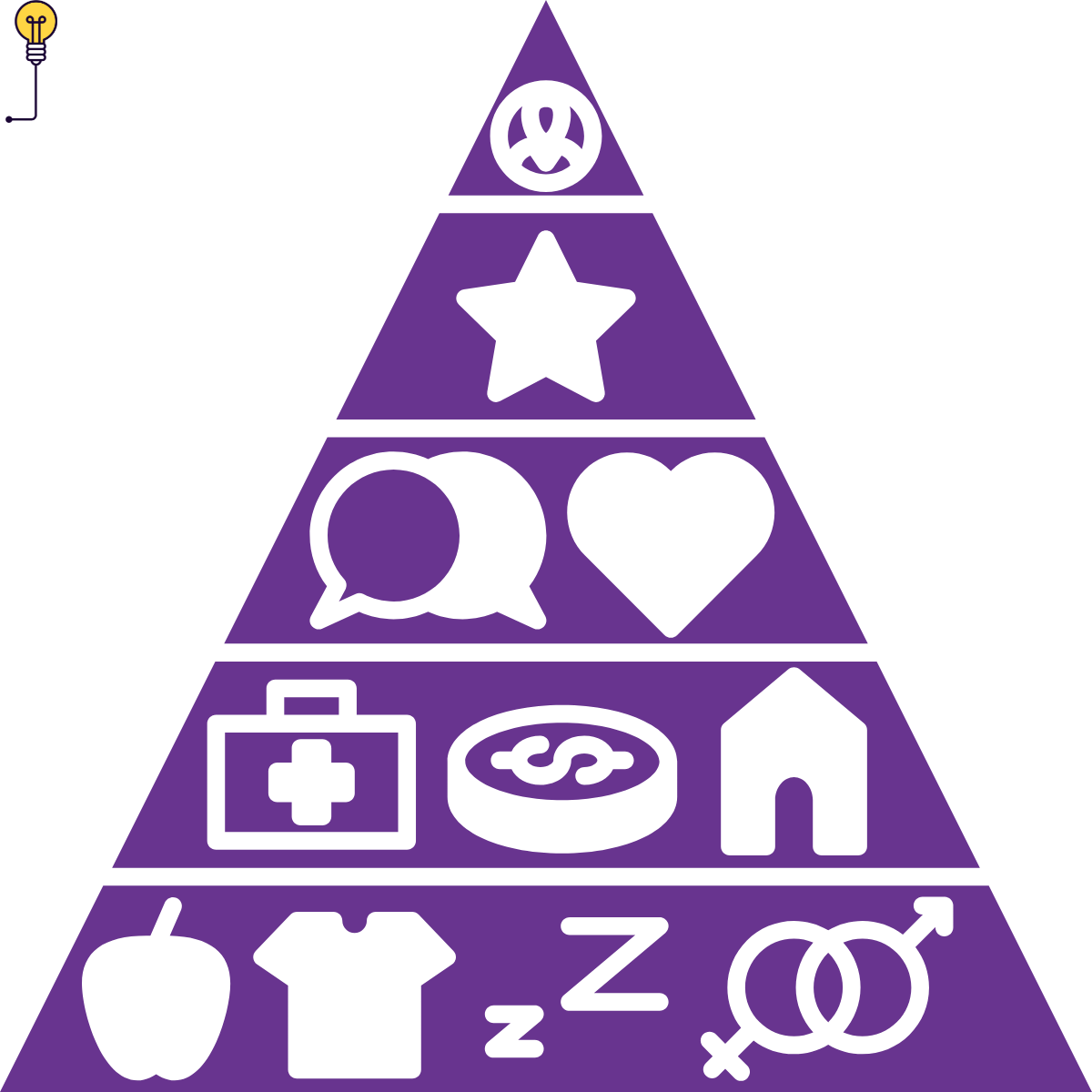From Overwhelm to Focus: Using a Hierarchy of Needs to Tackle Your To-Do List
At an entrepreneurship event during the Arab Spring, a student from Egypt asked me how prospective entrepreneurs in regions facing significant challenges should approach starting their own companies—and for my advice on how to get started. I froze.
I was acutely aware of my immense privilege when I started my company. Being from New Jersey—a privilege in itself—combined with a supportive family, being white, and having access to resources made my experience very different. I told the audience I wasn’t qualified to answer their question. If my physiological safety had been at stake, I doubt I would have started myYearbook. My mind simply wouldn’t have been in the space to consider entrepreneurship. I could only suggest building connections and forming bonds as a way forward.
This question stayed with me because it highlights a key truth about entrepreneurship: it’s easier to take risks when you have less to lose. One of the main reasons I believe it’s easier to start a company when you’re young is that you typically have fewer fears and responsibilities. You can pour your energy into building your business without the weight of substantial financial obligations or the fear of failure looming quite as large.
In my (very old) TED talk, I cited Maslow’s hierarchy of needs, which I still find incredibly useful. The concept is straightforward: we must satisfy our basic needs before focusing on higher-level self-actualization. If you’re hungry, your mind is preoccupied with getting food until that need is met. Similarly, if you’re in survival mode—worrying about safety or stability—it’s much harder to dream about starting a company or pursuing a big goal.
The hierarchy framework is also a powerful tool for organizing personal and professional priorities. Life has a way of inundating us with to-do lists that scatter our attention all over the pyramid of needs. Instead of trying to do it all at once, focus first on the most essential item—what needs to happen to survive or move forward?
As a founder and a mom, I’ve experienced firsthand how easy it is to get distracted by a million competing priorities. Here’s a glimpse into the intrusive thoughts that flood my mind within ten minutes of trying to “clear my head”:
I need to schedule a dentist appointment for daughter.
I should make more video clips.
I should post on Substack.
I should post on LinkedIn.
I need to record my audiobook.
I need to write next week’s emails for my 14-Day email challenge.
I need to pay sales tax on my book sales.
I should make a new Welcome Email.
I should write a better newsletter description.
I should reach out to podcasts.
The list feels endless. Most people have a similar running list of "coulds" and "shoulds," and it’s easy to bounce between tasks like a confused bumblebee. But the reality is this: there are far fewer things you need to be working on.
The key is to start with the needs—the non-negotiables with specific deadlines or obligations. These include paying sales tax by January 20th (thank you, State of NJ!), sending emails on time to purchasers of my 14-day challenge, or delivering audiobook recordings to my producer by early February. These are tasks I can’t delay, so I tackle them first.
The “need to” items are what wake me up at 3 a.m. Delaying them only amplifies the mental burden, even if there’s technically time to finish. I’ve learned that clearing these off my plate as soon as possible creates the mental space I need to address everything else.
Once the needs are handled, I move on to the "shoulds." But even among the shoulds, I prioritize them strategically, much like Maslow does with human needs. Some shoulds are more critical than others. For instance, posting on LinkedIn may feel important, but how does it fit into my broader strategy compared to writing my next email sequence? (Speaking of,
wrote a great post on about changes to her LinkedIn strategy. Check it out here.)This process forces me to consider how each task aligns with my goals. It helps me differentiate between what will move the needle for my work and what’s simply nice to have.
Think about your hierarchy of work. Build your to-do list around the importance of each item to your goals or business. Start with what’s essential—the foundation of your pyramid—and focus on completing that before moving on to the next level. When you work from the ground up, you gain clarity, momentum, and the satisfaction of knowing that what matters most is taken care of.
💪Want to discuss more about staying motivated? That’s the theme of this month’s office hours on January 24 at 1:30 pm ET! Register here for the Zoom info and to find out more.
🎯Need to drill in on precisely what your goal should even be? Join the 14-day New Year, New You challenge! It officially started earlier, but you can still join starting Monday the 27th. Register here!
👀Missed my book launch discussion? You can watch the recording here!
📖 Grab a copy of my book! Amazon | Barnes & Noble | Signed Copy




Thanks for the mention! This post is so relatable, both from the perspective of my own business and what I see with my clients. I’ve also been realizing just how many of those “shoulds” are reactive (for me). I’m working on taking a step back before dedicating bandwidth to a reactive “should” - putting it on my ideas list, thinking about whether it’s really the right thing for my business, and then (if so) where it fits in my strategy, priorities, and schedule. (But let’s be honest - this is hard! 😂)